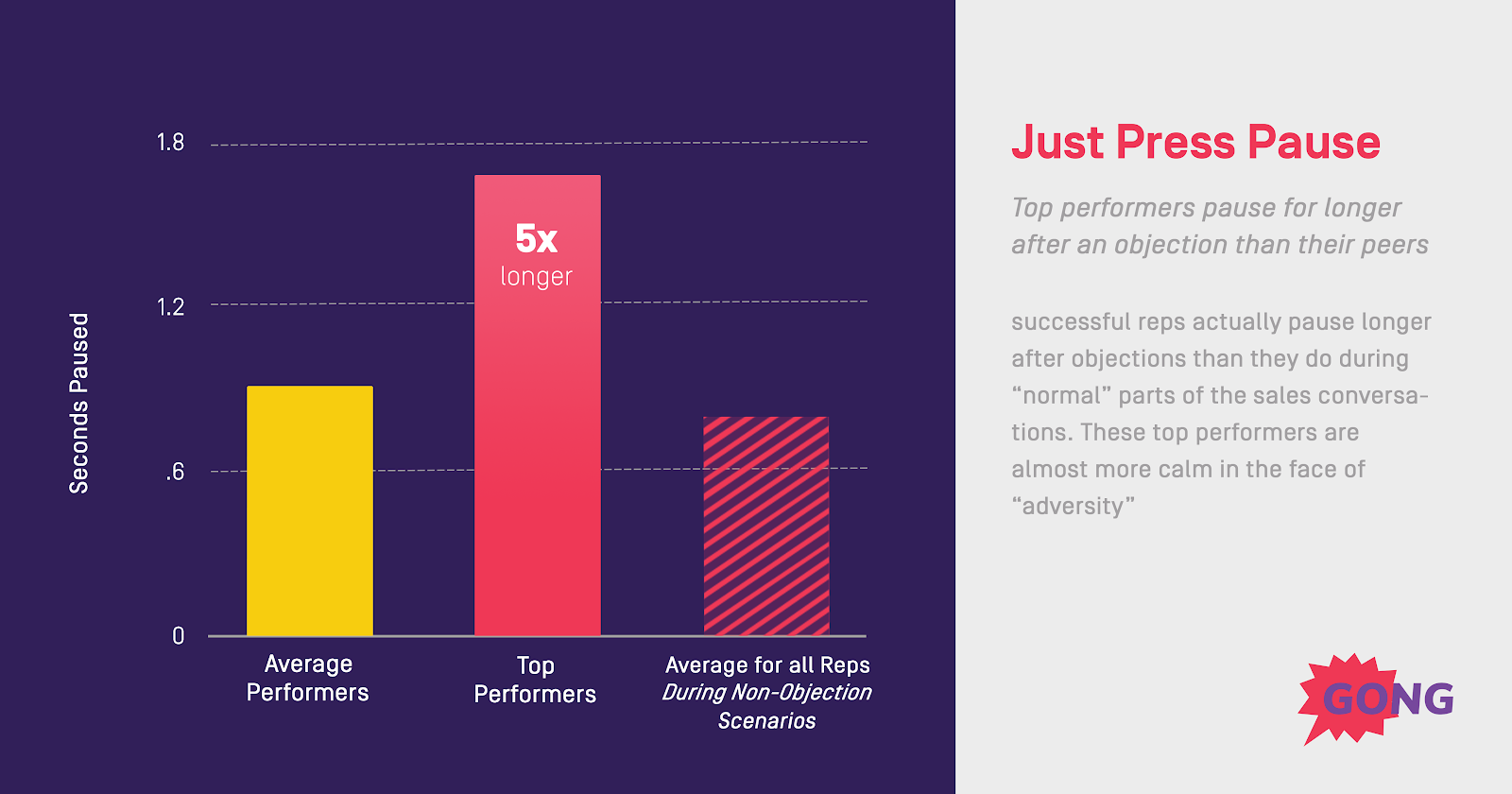The 3 Most Common Sales Objections
A sales objection can be a gift to a good sales person; allowing you to adjust your sales strategy to meet their needs.

Overcoming Sales Objections
It’s not always easy for people to understand the value of your product or service, why they need it, or why it’s better than what they’re currently using. During your initial pitch, they might say they’re not interested, and if you’re lucky, they will specify the reason why.
That is what we call a sales objection, and it might be the best thing that can happen to you! Why? Because it allows you to understand your lead’s true needs and fears, and therefore it allows you to adjust your sales strategy.
When your lead is not convinced, find out what really matters to them and provide a tailored solution.
Rather than using a common sales mould, you can focus on their pain points:
Do they need more data?
More reassurance?
More flexibility?
By doing so you’ll be able to provide great customer service and increase your chances of closing a sale.
In this article, we will explore what prospects actually mean when they raise an objection, what the most common sales objections are, and how to deal with them.
How To Reduce The Likelihood Of Sales Objections
First things first, it is important to talk about prevention – in other words, reducing the likelihood of people raising objections in the first place.
Know Your Market
If you’re calling or emailing people that are not likely to be interested in what you offer (their company is too small or too big, you missed the appropriate age group, their business has nothing to do with your service, and so on), you are not setting yourself up for a win. For example, that would be a scenario where you’re trying to sell dentures to young people.
Know Your Product
Imagine you just put down your phone, disappointed that another lead refused your offer because it lacked a feature. You tell your boss, just to find out your product does have that feature, or it can be customised to include it.
Have A Good Sales Plan
If your product is high-end, don’t start by quoting the price and then presenting all the advantages. The person listening will be repeating to themselves “I can’t afford this, I can’t afford this” all throughout your presentation – if they bother continuing to listen at all.
Negotiate First
Negotiation is one of the core skills of every sales rep. If you’ve followed the steps above, you’ll be able to negotiate the details of the sale with your customer and find a solution with which both sides will be happy.
Negotiation is the basic solution to most objections, but at the end of the day, if your sales rep is a good negotiator and listener, they will likely be able to prevent an objection from appearing at all.
Most Common Sales Objections
1. They believe your product is too expensive
One of the most typical problems sales reps face is presenting a price tag in a positive light. More often than not, beginner sales reps won’t have the power to offer discounts, but even if they do, it doesn’t mean they should.
When somebody says something is too expensive, it can mean a number of things. Sometimes, it is just a way to test you, to see if you can be trusted and how much you trust your own product. This is where preparation is important to help you appear more convincing.
Other times, people haggle by default, even though they might be willing to make the purchase. This is when you should present the quality, uniqueness, and the benefits of what you are offering. If they end up agreeing on any of that, they are acknowledging its worth.
Of course, sometimes people just don’t have enough money. The car industry is the most innovative in dealing with this problem by offering to pay for instalments, or postponing the payment by a few months.
Remember to also highlight all that comes with your product. Sometimes the competition may seem cheaper, but do they have the same track record? Do they provide 24/7 customer service? Is the lead protected by a return policy?
All of these things provide much-needed reassurance when making a purchase, big or small.
Finally, when all of this has been taken into account, remind your lead that the service does not exist in a vacuum – it will integrate with their business or lifestyle. If the product will pay for itself, reduce energy consumption, or make other subscriptions redundant, you end up offering a great-value-for-money investment.
2. They do not have time
Can you really blame somebody for saying that? There’s a lot going on in our daily lives, and it’s not always easy to make time for what really matters. When somebody raises this objection, the best thing you can do is prove your service really matters and is worth their time.
The first way to do this is to show how your product or service actually creates time for them. Similarly to products that pay for themselves, your product may need some setting up, but then it will save the prospect a lot of time in the long run and free up their schedule.
Other times, the prospect will be reassured simply by showing that you value their time. You can do that by offering a quick presentation, and then if they are interested, you can follow up with an email. If that doesn’t work, you can offer to reschedule the conversation at a time more convenient for them.
If this is already a rescheduled appointment or somebody you have been negotiating with for a while, and suddenly they don’t have time for you anymore, it means their necessity for your product has waned. Try to find out why, and then see how you can make the product matter for them again. If it matters, it will be worth their time.
Lack of time can also mean a lack of time management. If you believe this is your prospects M.O., they won’t have time even in three months. These people tend to deal with the most urgent things first, so you can make your offer more urgent by telling them you have a special offer that’s valid only for the current week.
3. They do not want to change
We instinctively resist change ‒ what we have might not be the best, but it is already well known to us. We are always scared that a new solution wouldn’t live up to its predecessor. But when your potential customer fears change, it is up to you to show them its benefits.
Sometimes a lead might already have a contract or a solution in place for the problem you’re offering to solve. When they mention that, it’s an opportunity for you to show how your service offers more, why it is better, and what’s unique about it.
If they don’t have a solution in place, but they are implicitly deciding to ignore the problem, you can follow two paths.
The first one is to provide positive examples of other clients that implemented your solution and are now satisfied. Or you can explain how the given industry has changed over time, and why it would be wise for them to follow the trend as well.
The second path is to present the cost of not taking action, meaning the issues that can come up if their problem is not dealt with swiftly. Business opportunities will be missed, and in turn, the profit won’t be made because of complacency. When confronted with this scenario, many reluctant leads will realise they should at least take you into consideration.
Takeaway
As we’ve mentioned, the solution to an objection can be to let the lead go, rather than to push for a bad fit that will lead to resentment and bad reviews. When you recognise that somebody is genuinely not in the market for your product or service, it is wiser to spend that time and energy on somebody that actually is.
But if that’s not the case, it’s up to you, as a business, to listen, negotiate, develop a sincere understanding of their problem, and employ creativity to offer a tailored solution.
Really Simple Systems is now Spotler CRM
The same great technology, a CRM platform that is focused on the needs of B2B marketers, provided by the same great team, at a great price!
